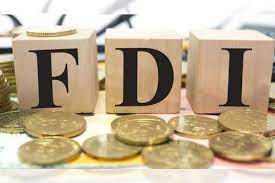
Published :
Updated :

It goes without saying that the benefit of foreign direct investment (FDI) for a developing country is immense. Economists have outlined a number of benefits with a great deal of empirical evidence to show the necessity of FDI. Though the patterns of FDI have changed over the decades, the ultimate goals are almost unchanged. These include infusing new technology, providing finance, bringing technological knowhow and managerial expertise, creating more job opportunities, improving infrastructure and, finally, promoting economic growth in the long run. Foreign investment is thus considered a critical tool for the underdeveloped countries to move ahead, which is also applicable to the Least Developed Countries (LDCs) to graduate from the UN-defined category.
In this connection, a note released by the United Nations Conference on Trade and Development (UNCTAD) this month presented a dismal picture. The special issue of the Investment Trends Monitor (No. 45) showed that FDI flows to the LDCs as a group increased slightly in the last decade. After a peak in 2015 when LDCs accounted for more than 5.0 per cent of the developing countries' combined FDI, it fell back to around 3.0 per cent of that of the developing nations and less than 2.0 per cent of global FDI. The note also pointed out that the growth of FDI in these countries had lagged behind other external sources' finances like aid and remittance.
The UN agency released the note while the Fifth United Nations Conference on the Least Developed Countries (LDC5) taking place in Doha early this month to finalise a comprehensive roadmap for these countries, currently 46 in number, to be precise, to move forward in the next decade. In the five-day grand gathering of the global leaders, the Doha Programme of Action (DPoA) has been adopted to achieve various targets by 2031. The DPoA also acknowledges that FDI flows into LDCs had already been on a decline since 2015, reaching $21 billion, or 1.4 per cent of world FDI, in 2019. "Covid-19 accelerated the decline of FDI to least-developed countries, which remains heavily concentrated in the extractive industries," it, however, noted, adding that some least-developed countries have undertaken measures to facilitate investment, such as fast-approval procedures, more use of digital tools, a cut in fees, and automatic renewal of permits.
Underscoring the importance of FDI in the LDCs, the DoPA has urged the development partners, multilateral development banks and other international and regional organisations to 'substantially increase their investment in least-developed countries. The action plan also appreciates the establishment of the Investment Support Programme for LDCs, implemented by the International Development Law Organization, to provide legal and technical support to these countries on investment-related matters as a good step. Now further strengthening the programme, inviting donors to continue to support it and encouraging LDCs to make wide use of the programme's facilities are set as critical. DoPA thus has set a target to 'adopt and implement investment- promotion regimes for the least- developed countries. The programme is designed to support two broad areas: investment-related negations and investment-related dispute settlements.
Meantime, a three-day business summit also took place in Bangladesh in the last week in Dhaka. Organised by the Federation of Bangladesh Chambers of Commerce and Industry (FBCCI) to commemorate the 50th anniversary of the country's apex trade body, the summit drew some 300 delegates from several countries, including Saudi Arabia, Japan, the United Kingdom, China, Korea and India. They along with local business leaders and the country's policymakers discussed the prospects, possibilities and obstacles in the country's business and investment environment.
The summit was an attempt to attract more FDI in the country to meet the growing need for development finance, especially in the post-LDC period. Bangladesh is already in the final phase of LDC-graduation process and set to get out of the category in 2026. The average inflow of net FDI in the country is recorded at US$ 2.31 billion in the last decade. Bangladesh is one of the top-five LDCs and these five countries attracted 55 per cent of the total FDI in all LDCs during the last decade. Other four top LDCs are Cambodia, Mozambique, Ethiopia and Myanmar.
Though overall FDI in the LDCs was estimated to have declined by 30 per cent in 2022, Bangladesh experienced an upward trend during the period. Net inflow of FDI in the first nine months (January-September) of the last year increased by around 48 per cent to $2.66 billion from $1.80 billion in the same period of 2021, according to the statistics available with Bangladesh Bank. More than two-thirds of the FDI came in the form of reinvested earnings during the period under review. Intra-company loans also increased whereas fresh injection of equity dropped in the same period.
The current amount of FDI is neither sufficient nor sustainable in the long run. So, Bangladesh needs to pursue a more dynamic investment policy instead of a piecemeal approach. Promoting joint venture is also necessary. There are some unexplored and non-traditional areas where foreign investment could be attracted as there is no bar in the current investment policy which is quite liberal. Public transport is such a potential sector. If the government provides a favourable environment by strictly curbing the irregularities and chaos, it is possible to get some FDI in this sector, which will be beneficial to the commuters in the end. Rail sector can also draw some foreign investment for a longer term. More FDI may also come into the hospitality sector as a big consumer group is already there and is growing gradually. As the LDC graduation is approaching, it is time to adopt some unconventional approaches regarding foreign investment.


 For all latest news, follow The Financial Express Google News channel.
For all latest news, follow The Financial Express Google News channel.